In the realm of DIY auto repairs, ingenious solutions often take the lead. When confronted with unforeseen automotive challenges, the transformation from exasperation to accomplishment through a straightforward fix is truly remarkable. This is where the remarkable utility of zip tie hacks for auto repair shines. Beyond mere fasteners, zip ties are a versatile tool that steps up to the task. Whether you’re out on the road or engrossed in garage tinkering, these unassuming heroes stand ready as your reliable solution for swift fixes and inventive remedies.
Emergency fixes on the road
When you’re cruising down the highway or navigating through city streets, the last thing you want is an unexpected automotive hiccup. While major breakdowns might require professional help, there are several common on-the-road problems that can be temporarily remedied with the help of trusty zip ties. These fixes can get you back on track and buy you some time until you reach a repair shop.
- Flat Bumper Solution: Your bumper decides to take a break and dip lower than it should. While this might not seem like a big deal, a dragging bumper can cause further damage or become a hazard to other drivers. Use zip ties to secure the sagging portion of the bumper, preventing it from scraping against the road until proper repairs can be made.
- Loose Trim Quick Fix: Suddenly noticing a piece of trim flapping in the wind can be disconcerting. To prevent it from detaching completely, use zip ties to secure the loose trim back in place. Just make sure not to tighten the ties too much to avoid damaging the trim.
- Grille Woes: A loose grille not only affects your car’s appearance but can also impact its aerodynamics. If you find your grille hanging on by a thread, strategically placed zip ties can temporarily secure it until you can address the issue more thoroughly.
- DIY License Plate Mount: Losing your license plate isn’t just an inconvenience; it can also result in legal troubles. In a pinch, use zip ties to fasten the license plate securely to its mount. This makeshift solution can help you avoid getting pulled over.
- Headlight Troubles: A flickering headlight due to a loose connection can significantly hamper your visibility. Secure the wiring and connections with zip ties to keep the headlight steady until you can address the issue properly.
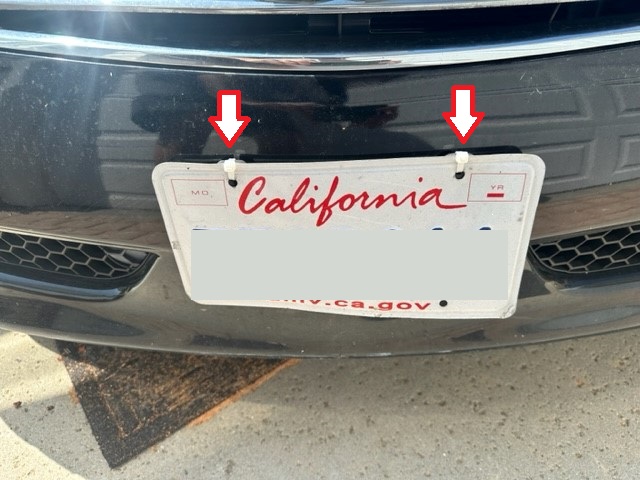
Remember, these emergency fixes are intended to be temporary solutions to get you out of a bind. While zip ties can provide a quick fix on the road, always prioritize safety and consult a professional mechanic for a more permanent repair when you’re able. Having a few zip ties of various sizes in your emergency car kit can be a game-changer, turning a potentially stressful situation into a manageable one.
Under the hood solutions
The engine compartment of your car is a complex network of components, wires, and hoses that work together to keep your vehicle running smoothly. When some of these elements become loose or start causing issues, zip ties can step in as handy temporary fixes until you can properly address the problem. Here are a few scenarios where zip ties can save the day under the hood:
- Securing Wires and Hoses: Over time, the vibrations and movements of your engine can cause wires and hoses to shift or become loose. If you notice a loose wire harness or a hose that’s threatening to come undone, use zip ties to secure them in place temporarily. This will prevent any potential damage or interference while you’re on the road.
- Battery Terminal Troubles: A loose or corroded battery terminal can lead to starting problems. If you find your battery terminal wiggling or making poor contact, use zip ties to secure it tightly to the battery post. This quick fix can provide a temporary solution until you can clean or replace the terminal.
- Radiator Hose Support: A loose or dangling radiator hose can result in coolant leaks and engine overheating. In emergency situations, secure the hose to its mount using zip ties to prevent it from causing further damage or becoming a hazard.
- Mending Minor Air Intake Issues: If you discover a crack or break in your air intake tubing, you can temporarily seal the gap with a series of tightly spaced zip ties. This can prevent unfiltered air from entering the engine and causing performance issues.
Are zip ties safe to be used in the engine bay?
Yes, zip ties can be used in the engine bay for various purposes. They are often used to secure and organize wires, hoses, and other components to prevent them from moving around, chafing against other parts, or interfering with moving components. However, there are a few important considerations to keep in mind when using zip ties in the engine bay:
- Heat Resistance: The engine bay can become quite hot, especially around the exhaust manifold and other components. Make sure to use heat-resistant zip ties designed to withstand high temperatures to prevent them from melting or weakening.
- Type of Zip Ties: Opt for heavy-duty or automotive-grade zip ties that are specifically designed for under-the-hood applications. These zip ties are made to withstand the harsh conditions of the engine bay.
- Proper Placement: When using zip ties in the engine bay, ensure they are placed away from moving parts, belts, and areas of high heat. Improperly placed zip ties could cause damage to the components they’re meant to secure.
- Avoid Interference: Be cautious that the zip ties do not interfere with the proper functioning of other components. For example, avoid tying wires or hoses too tightly, as this could restrict their movement or flow.
- Regular Inspection: Regularly inspect the zip ties in the engine bay to ensure they haven’t deteriorated due to heat or wear. Replace any zip ties that show signs of damage.
- Temporary Fixes: While zip ties can be effective for securing certain components temporarily, they should not be used as permanent replacements for proper repairs. If you’re using zip ties in the engine bay, it’s essential to address the underlying issue with a more permanent solution as soon as possible.
While zip ties can serve as effective stopgap measures for under-the-hood problems, it’s essential to remember that they are not a substitute for proper repairs. Use them to get your vehicle to a safe location or to a repair shop, where a professional mechanic can address the issue comprehensively. Additionally, be cautious when using zip ties near areas of heat or moving parts, as their plastic construction might not withstand high temperatures or friction. Proper repairs should always be your ultimate goal, with zip ties acting as a helpful tool to keep things together until you reach that point.
Interior repairs with zip ties
Zip ties aren’t just handy for fixing exterior and under-the-hood issues; they can also work wonders when it comes to interior repairs. From loose panels to sagging headliners, these versatile fasteners can help you restore the interior aesthetics and functionality of your car. Here are a few ways you can use zip ties for interior fixes:
- Sagging Headliner Support: An unattractive sagging headliner can make your car’s interior look neglected. Temporarily address this issue by using zip ties to secure the sagging sections to the roof structure. Make sure not to tighten the ties too much, as this could cause further damage.
- Broken Door Handles: A broken interior door handle can be a major inconvenience. While you’ll eventually need to replace the handle, you can use zip ties to create a makeshift grip. Thread a zip tie through the hole where the handle used to be, providing a temporary way to open the door from the inside.
- Loose Panels and Trim: Over time, interior panels and trim pieces can become loose and rattle annoyingly. Use zip ties to secure these pieces back in place, reducing vibrations and creating a cleaner look inside your car.
- Seat Repairs: If you find a tear or loose fabric on your car seats, you can use zip ties to temporarily hold the fabric together and prevent the damage from worsening. This can provide a short-term solution until you’re able to get the seat properly repaired or reupholstered.
- DIY Storage Solutions: Get creative with zip ties to organize your interior space. Create simple hooks with zip ties to hang small items like trash bags or shopping bags on the back of seats. You can also use zip ties to secure loose cables and keep them from tangling.
While zip ties can work wonders for interior fixes, keep in mind that they’re not a substitute for professional repairs. Interior components like airbags, electronics, and safety features require careful handling, and improper use of zip ties can interfere with their functionality. Use zip ties for minor fixes and improvements, but prioritize safety and proper repairs for more significant interior issues. Just like with any other repair, a temporary zip tie solution should be a stepping stone toward a more comprehensive fix.
Examples of car interior fixes with zip ties
When it comes to ingenious solutions for car interior woes, zip ties prove their versatility once again. Let’s delve into some practical scenarios where these unassuming plastic wonders can rescue your car’s interior aesthetics and functionality.
2015 Chrysler Town & Country driver seat fix
The plastic panel on the driver’s seat of our trusty minivan had come loose, causing an irritating flapping every time we hit the road. Determined to put a stop to this annoyance, I decided to employ a simple but effective solution – a zip tie. The beauty of the fix lay not just in its effectiveness, but in the fact that a black zip tie happened to be a remarkably close color match to the seat itself.
Executing the fix required a bit of drilling finesse. Gently, I drilled a small hole through the plastic on the side of the seat, strategically positioning it to secure the zip tie snugly. With the zip tie threaded through the hole and expertly tightened, the once-loose panel was now firmly in place, no longer disrupting the peace of our drives with its incessant flapping.

2004 Ford Thunderbird center console fix
The sleek interior of our 2004 Ford Thunderbird had been an oasis of comfort and style – until an unexpected hitch disrupted its aesthetics. The center console’s top, once secured by three screws, had come loose due to the unfortunate cracking of the plastic they anchored into. Faced with the prospect of a nearly $200 replacement, I embarked on a mission to find a more budget-friendly solution. The answer? A surprising hero in the form of zip ties.
With a little ingenuity and determination, I harnessed the versatility of two sizeable zip ties to mend the situation. Carefully threading them through the hinge and the top, I managed to secure the console’s top in place, effectively restoring its functionality and appearance. This creative fix not only saved a significant sum but also showcased the remarkable durability of zip ties.
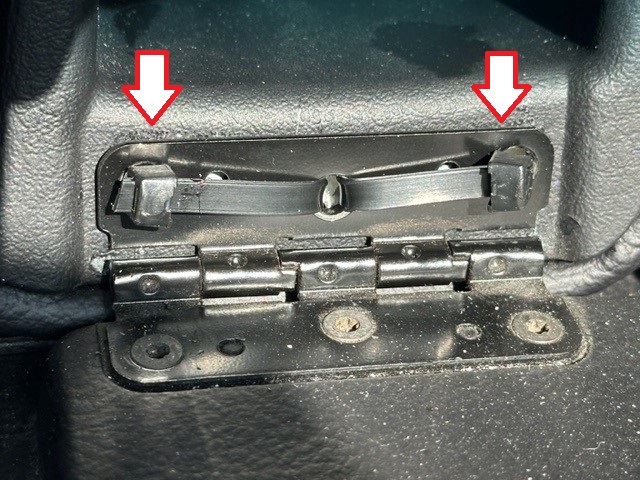
Remarkably, over a year has passed since the impromptu zip tie repair, and the center console remains steadfast, firmly attached and ready to serve. The experience stands as a testament to the unexpected solutions that can be born out of necessity and resourcefulness. In a world where automotive repairs can often be complex and costly, sometimes all it takes is a couple of zip ties to steer you towards an effective and enduring solution.
Types of zip ties to carry in your vehicle
When it comes to using zip ties for quick fixes and emergency repairs on the road, having the right types and sizes of zip ties on hand can make all the difference. Here are some essential types of zip ties to consider carrying in your vehicle’s emergency kit:
- Standard Nylon Zip Ties: These are the most common and versatile zip ties. They come in various lengths and can be used for a wide range of applications, from securing loose components to temporarily fixing exterior and interior issues.
- Heavy-Duty Zip Ties: For more robust fixes, such as securing heavier components or addressing under-the-hood problems, opt for heavy-duty zip ties. They are designed to withstand greater pressure and can provide a stronger hold.
- UV-Resistant Zip Ties: If your repairs might be exposed to sunlight, such as securing components in the exterior, consider UV-resistant zip ties. They are designed to withstand prolonged sun exposure without deteriorating.
- Self-Locking Releasable Zip Ties: These zip ties are equipped with a mechanism that allows you to release and reposition them without cutting. They can be useful for temporary fixes that might need adjustments.
- Stainless Steel Zip Ties: When dealing with high-temperature areas or situations where extra durability is required, stainless steel zip ties are a great choice. They are resistant to heat and corrosion, making them suitable for under-the-hood fixes.
- Colored Zip Ties: While functionality is key, colored zip ties can help you organize your emergency kit and make it easier to find the right tie for the job. Assign different colors for specific applications to stay organized.
- Assorted Sizes: Carrying an assortment of zip tie lengths ensures you have the right tie for various repairs. From small interior fixes to larger exterior jobs, having a range of sizes can be incredibly useful.
Remember, while zip ties can be incredibly handy for quick fixes, they are temporary solutions meant to get you out of a bind until you can address the issue properly. After using zip ties to manage a problem, it’s crucial to prioritize getting your vehicle inspected and repaired by a professional mechanic as soon as possible. By having a selection of these essential zip ties in your vehicle’s emergency kit, you’ll be better equipped to handle unexpected situations and keep your car running smoothly on the road.
What are some alternatives you can use in place of zip ties?
There are several alternatives to zip ties that can be used for various applications, depending on the specific need and situation. Here are a few alternatives:
- Twist Ties: These are flexible wires encased in plastic or paper that can be twisted around objects to secure them. They are commonly used for organizing cables and small items.
- Velcro Straps: Velcro straps consist of hook-and-loop fasteners and are reusable. They are great for bundling cables, securing hoses, and organizing items.
- Cable Clips: These are small clips that can be mounted to surfaces to hold cables and wires in place. They come in various sizes and styles to suit different needs.
- Wire Clamps: These are devices designed to hold wires, cables, and hoses securely in place. They often have adjustable tension and can be used in various automotive and household applications.
- Bungee Cords: Bungee cords with hooks can be used to secure items, especially larger objects, in place. They offer adjustable tension and are commonly used for securing cargo.
- Hose Clamps: Hose clamps are specifically designed to secure hoses to fittings and connections. They come in various sizes and styles, including screw-type and spring-loaded clamps.
- Duct Tape: Duct tape can be used for temporary fixes, such as holding together broken components. However, it’s not a long-term solution and may leave residue.
- Rope or Cord: For larger or more heavy-duty applications, ropes or cords can be used to secure items. Knots like the clove hitch or square knot can provide effective securing points.
- Adhesive Cable Clips: These clips have adhesive backs and can be attached to surfaces to hold cables and wires in place. They work well for organizing cables along walls and surfaces.
- Reusable Zip Ties: Some companies offer reusable zip ties made from durable materials, allowing you to adjust and reuse them multiple times.
Remember that while these alternatives can be effective in specific situations, they each have their own limitations and best use cases. It’s important to choose the alternative that suits the task and environment to ensure the safety and functionality of the secured items.
Conclusion
In the world of auto repairs, ingenuity and resourcefulness often play a vital role in getting your vehicle back on track. The art of using zip ties for quick fixes and creative solutions showcases how a simple tool can make a significant difference when faced with unexpected automotive issues.
From emergency roadside repairs to under-the-hood solutions and interior enhancements, zip ties prove their versatility time and again. These plastic wonders may not be the ultimate fix, but they are a valuable asset in your arsenal, offering temporary relief until you can undertake proper repairs.
As you explore the diverse applications of zip ties in auto repairs, remember that safety and thoroughness are paramount. While zip ties can help you navigate minor issues, professional intervention is crucial for more complex problems. Your car’s performance, your safety, and the longevity of your vehicle depend on a combination of smart temporary fixes and comprehensive repairs.
So, whether you’re securing a sagging bumper, mending a loose wire, or creating a makeshift solution for a broken interior component, embrace the power of zip ties as your trusty sidekick on the road to automotive solutions. With a little bit of creativity and the right types of ties at your disposal, you’ll be well-prepared to tackle unexpected challenges and transform frustrating breakdowns into triumphant repairs.


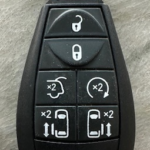
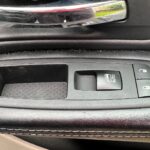

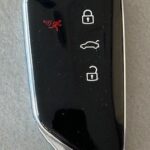

Leave a Reply